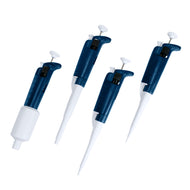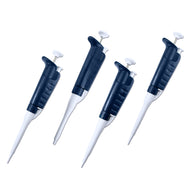Micropipette
Solution preparation relies upon the precise measurement of volumes to obtain the exact concentrations required. Using the right micropipette determines not only the accuracy, but also the reproducibility of your experiments.
Our wide range of fixed and variable micropipettes includes volumes from 0.2 μl up to 10 ml. Each micropipette is pre-calibrated and tested, and we have prepared several handy guides on how to use your micropipette to get the best results possible.
Jump to: Browse micropipette range | Choose a micropipette | Tips for using a micropipette | Resources and support
Browse Micropipette Range
Filter by product:
Choosing a Micropipette
Fixed or Variable Volume: Which is Best for You?
If your work involves repetitive dispensing of a single volume, choose a fixed volume micropipette. However, if your experiments need flexibility for different sample volumes, a variable volume micropipette is the better option.
Fixed volume micropipette
Variable volume micropipette

Ossila Variable Volume Micropipettes
| Volume Range | Accuracy | Repeatability |
|---|---|---|
| 0.2 – 2 μl | ±15.0 – 1.5% | ≤8.0 – 1.0% |
| 1 – 10 μl | ±3.0 – 1.2% | ≤1.5 – 0.5% |
| 2 – 20 μl | ±6.0 – 1.2% | ≤2.0 – 0.4% |
| 5 – 50 μl | ±2.0 – 1.0% | ≤1.5 – 0.5% |
| 10 – 100 μl | ±3.0 – 0.8% | ≤1.0 – 0.2% |
| 20 – 200 μl | ±2.0 – 0.8% | ≤0.6 – 0.2% |
| 100 – 1000 μl | ±1.8 – 0.8% | ≤0.4 – 0.2% |
| 0.5 – 5 ml | ±2.5 – 0.7% | ±0.4 – 0.2% |
| 1 – 10 ml | ±3.0 – 0.7% | ≤0.8 – 0.2% |
Ossila Fixed Volume Micropipettes
| Volume Range | Accuracy | Repeatability |
|---|---|---|
| 5 μl | ±1.5% | ≤0.6% |
| 10 μl | ±1.0 | ≤0.4% |
| 20 μl | ±1.0% | ≤0.3% |
| 25 μl | ±1.0% | ≤0.3% |
| 50 μl | ±0.8% | ≤0.2% |
| 100 μl | ±0.8% | ≤0.2% |
| 200 μl | ±0.8% | ≤0.2% |
| 500 μl | ±0.8% | ±0.2% |
| 1000 μl | ±0.8% | ≤0.2% |
Tips for Using Your Micropipette
Using your micropipette correctly ensures accurate and reproducible dispensing in your experiements.
Withdrawing
- Do not fully insert the tip, immerse it around 1 cm into the solution. This prevents you from taking air into the micropipette.
- For viscous solutions, release the plunger very slowly to ensure that no air bubbles form in the tip.
- Keep the micropipette facing downwards while there is solution in the tip. This stops the solution from running into the piston mechanism, which will damage and contaminate it.

Dispensing
- Select an appropriate disposable tip that matches the volume to be dispensed and ensure it is securely attached.
- Release the plunger slowly and steadily to ensure accurate volume delivery.
- Dispense the liquid close to the vessel wall to prevent splashing but avoid touching the sides of the container or vessel to prevent contamination.
- Small volumes may need you to dispense directly into the solution by immersing the tip, or dispense onto the side of the vial.
- Replace the tip after each dispense to avoid cross contamination.
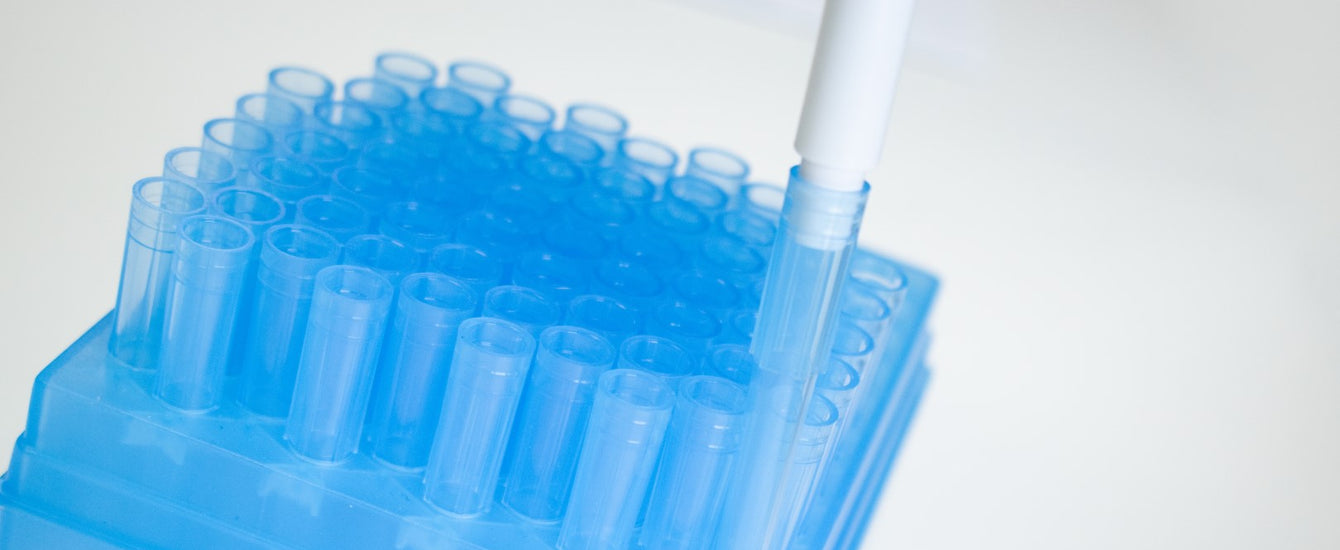
Calibration and Maintenance
- Recalibrate micropipettes if they are set to a volume outside of its stated operational range to ensure that you are still getting the correct volumes.
- If the micropipette is dropped, you may need to recalibrate it.
- Before use, visually inspect the micropipette for any damage or contamination and ensure that it is clean and in good working condition.
- After use, eject the tip using the tip ejector mechanism. Ensure that the tip is ejected into a suitable waste container to prevent contamination.
Resources and Support
 Getting Started with a Micropipette
Getting Started with a Micropipette
Using your micropipette correctly ensures the most accurate and reproducible measuring and dispensing of solutions.
Read more...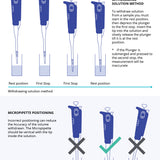 Positioning and Withdrawing a Micropipette
Positioning and Withdrawing a Micropipette
Follow our guide to correctly position and withdraw liquid with your micropipette.
Read more... Components and Parts of a Micropipette
Components and Parts of a Micropipette
Micropipettes are indispensable tools in laboratories. These can be used in many applications ranging from thin film deposition by spin coating to cutting-edge molecular biology experiments like PCR (Polymerase Chain Reaction).
Read more...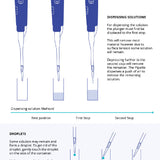 Dispensing Liquid from Micropipette
Dispensing Liquid from Micropipette
Micropipettes allow liquids to be measured and dispensed both precisely and quickly. Therefore, micropipettes are used in a wide range of applications from microbiology to analytical chemistry.
Read more...Micropipette Techniques for Accurate Measurements
Correct technique is important to getting accurate measurements when using a micropipette. Follow the instructional videos below for guidance on measuring volumes accurately with a micropipette.
Learn more...